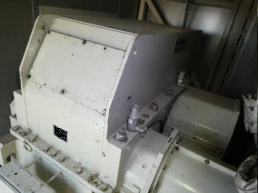Client: Confidential – Latin American Independent Power Producer
Service: Expert Failure Investigation & Root Cause Analysis
Sector: Thermal Power Generation
Date: 2024
Background
Whitecastle Engineering was commissioned to investigate a catastrophic gearbox failure that led to an unplanned outage of a power generation unit in Peru. The failure occurred during a routine post-maintenance restart, resulting in elevated vibrations, excessive heat, and operational noise from the gearbox. The unit was promptly shut down under emergency procedures.
Objectives
Conduct a Root Cause Analysis (RCA) of the gearbox incident to:
- Diagnose the cause(s) of failure.
- Assess the historical maintenance regime.
- Provide strategic recommendations to prevent recurrence.
Key Findings
-
Inadequate Specialist Oversight: Unlike the generator, which had OEM’s dedicated support, the gearbox maintenance was handled by the Gas Turbine (GT) OEM, responsible for the maintenance of the unit through a Long Term Service Programme (LTP), using general service engineers without specific expertise in high-speed double helical gearboxes.
-
Ignored Warning Signs: Multiple inspections between 2017–2023 noted pinion erosion and unilateral wear patterns. The LTP provider’s personeel deemed the unit “serviceable” despite clear indicators of progressive deterioration.
-
Questionable Repairs: In 2021, the LTP provider conducted uncontrolled on-site grinding of pinion teeth—altering the tooth profile without the Gearbox OEM validation— reducing toothing contact area and increasing stresses and vibration, which accelerated the degradation of the gearbox integrity.
-
Sub-optimal Spare Strategy: The LTP provider failed to include a spare gear set in the critical spares list of the operator, despite long lead times (5–6 months) and the absence of inventory at their own facilities.
-
Failure Mechanism: The noticeable failure mechanism of the gear set was the circumferential slippage at the pinion and gear shafts’ interface. However, the root cause of the failure was the compounded effect of increased vibration due to loss of toothing contact area, misalignment of casing and/or bearings and off-design, dynamic loads caused by abnormal operating conditions (power grid instability).
Value Delivered
- Issued a clear, evidence-based technical report detailing causal chains and critical failings in the maintenance strategy.
- Provided a technical foundation for contractual and legal action.
- Recommended corrective measures including redesign of spares strategy, appointment of gearbox-specific specialists, and revised inspection protocols.
Lessons Learned
This case underscores the risk of generic maintenance practices applied to highly specialised components. Advanced turbomachinery requires domain-specific oversight—failure to act on early signs, combined with inadequate failure mitigation planning, can have significant operational and financial impacts.





